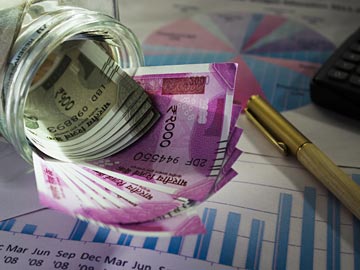How to Calculate HRA Exemption
Understanding how to calculate HRA exemption is very important if you want to save on taxes. It may sound complicated at first, but the rules are actually very simple once you get the basics right.
The HRA exemption you can claim is the lowest of the following three amounts:
Details
|
1. Actual HRA received from your employer
|
2. 50% of your salary if living in a metro city (Delhi, Mumbai, Kolkata, Chennai) or 40% if living in a non-metro city
|
3. Excess rent paid annually over 10% of your basic salary and dearness allowance
|
Let us take an easy example to understand this better:
- Basic Salary = ₹30,000 per month
- Dearness Allowance (DA) = ₹5,000 per month
- Rent Paid = ₹15,000 per month
- HRA Received = ₹12,000 per month
- City = Mumbai (Metro city)
Now, let’s calculate the three amounts:
50% of Salary:
Salary = ₹30,000 + ₹5,000 = ₹35,000
50% of ₹35,000 = ₹17,500Actual Rent Paid – 10% of Salary:
10% of ₹35,000 = ₹3,500
Rent Paid – 10% of Salary = ₹15,000 – ₹3,500 = ₹11,500Actual HRA received = ₹12,000
Now, check which one is the smallest:
The lowest amount is ₹11,500.
Therefore, ₹11,500 will be tax-free. It will not be added to your taxable income. The remaining amount of HRA will be taxable.
This is how simple it is to understand how to calculate HRA tax exemption. Always remember, it is the lowest of the three figures that becomes exempt from tax.
By understanding this calculation properly, you can ensure you are claiming the correct exemption and saving as much tax as possible. Also, it is always a good habit to check your salary slip carefully to know your Basic Salary, Dearness Allowance, and HRA received so that you can easily do your own HRA calculation without any mistakes.
How can an HRA Calculator Help You?
An HRA calculator is a very useful tool that makes the whole process of HRA calculation simple and error-free. If you are confused about how to calculate HRA exemption, using an HRA calculator can make things very easy for you.
Here are some important ways in which an HRA calculator can help:
Quickly tell your tax-free HRA amount:
When you use an HRA calculator, you just need to fill in a few details like your Basic Salary, Dearness Allowance, HRA received, rent paid, and whether you live in a metro city or a non-metro city. Based on this information, the calculator will instantly show you how much HRA is tax-free. This saves you the trouble of doing manual calculations.
No need to remember the HRA deduction formula:
If you are not good at remembering tax formulas or maths, you do not need to worry. The HRA calculator will apply the correct HRA deduction formula for you automatically. You only have to input your details correctly, and the result will be accurate.
Helps in better tax planning:
When you know how much of your HRA is tax-free, you can plan your taxes better. You will be able to make other tax-saving investments wisely because you will already know how much tax benefit you are getting from your HRA.
Saves time and reduces mistakes:
Doing manual HRA calculations can take time and may lead to errors. But an HRA calculator gives results in a few seconds and is very accurate. This helps you avoid mistakes that can cause problems later when you file your income tax return.
Thus, when you are thinking about how is HRA exemption calculated, using an HRA calculator is the fastest and easiest way to get the correct tax-free HRA amount without any confusion.
How to Use the HRA Calculator?
Here’s how you can use an HRA calculator online easily:
- Step 1: Enter your Basic Salary and Dearness Allowance (DA).
- Step 2: Enter the HRA you receive from your employer.
- Step 3: Enter the rent you pay every month.
- Step 4: Select if you stay in a metro city or non-metro city.
- Step 5: Get the result instantly showing the tax-exempt HRA amount!
Benefits of using an HRA calculator
The main benefits of using an HRA calculator are:
- Fast results without any mistakes.
- Helps you plan your tax savings early.
- Easy to use even if you are not a tax expert.
- Saves your effort and avoids confusion.
Documents Required for HRA Exemption Claim
You need simple documents to claim your HRA tax exemption:
- Rent Receipts
- Rental Agreement
- Form 12BB
- Bank payment proof for rent
- Salary slip where HRA is incorporated
- If your annual rent exceeds ₹1 lakh, you must provide your landlord’s PAN to claim HRA exemption.
- If the landlord doesn't have a PAN, they must submit a signed declaration stating this, as per Circular No. 8/2013 dated 10 October 2013.
How is HRA exemption calculated for special cases?
Paying Rent to Family Members
- Yes, you can pay rent to your parents and claim HRA.
- But make sure the property is owned by your parents and they show the rental income in their tax returns.
- Keep rent receipts and a simple rent agreement ready.
Owning a House Elsewhere
- You may own a house in a different city but stay on rent in your work city.
- You can claim HRA exemption and home loan benefits together.
- But your owned house should not be in the same city where you work.
Not Receiving HRA
- If you don’t get HRA from your employer, you can still claim a deduction under Section 80GG.
- Conditions: You should not own any house in the city, and rent paid should be more than 10% of total income.
- The maximum deduction allowed is ₹5,000 per month or 25% of total income (whichever is less).
Knowing these HRA calculation rules can help you claim the right amount and save tax.
Important Rules to Remember for HRA
Here are some quick rules about HRA deduction calculation:
- HRA exemption is available only for rent paid for living accommodation.
- Maintenance charges like society maintenance or electricity bills are not counted.
- Always keep proof like rent receipts and agreements ready.
- HRA is taxable if you stay in your own house.
- Submit PAN of landlord if annual rent is more than ₹1 lakh.
Conclusion
Learning to determine HRA value alongside HRA exemption methods and HRA tax exemption conditions allows you to save a significant sum throughout the year.
All taxpayers should verify basic rules while having their documents prepared. No matter which method you choose for HRA calculations, between a calculator or manual use of the HRA deduction formula, you need to ensure accuracy in your calculations.
The House Rent Allowance serves as an essential benefit since Indian cities exhibit ongoing rent increases. The knowledge of house rent allowance meaning, together with its benefits, enables you to optimize your income tax planning.
Keep these tips in mind, stay informed, and save smartly!
FAQs
How much of the HRA I earn is tax-exempt?
The amount of HRA that is tax-exempt is the lowest of three things. It is either the actual HRA you receive from your employer, or 50% of your salary (if you live in a metro city) or 40% of your salary (if you live in a non-metro city), or the amount left after subtracting 10% of your salary from the total rent paid. Whichever is the smallest amount will be tax-exempt.
Can I claim HRA tax exemption when my landlord is an NRI?
Yes, you can claim HRA tax exemption even if your landlord is an NRI (Non-Resident Indian). But there is one extra step. You must deduct 30% TDS (Tax Deducted at Source) from the rent you pay and deposit it with the government. Make sure to keep your rent agreement, rent receipts, and proof of TDS payment. These documents are important if you want to claim your HRA exemption correctly when filing your income tax.
Which documents prove I have paid my rent?
To prove that you have paid your rent, you must collect and keep a few documents. These include rent receipts signed by your landlord, a copy of the rent agreement, and your bank statement that shows rent payments made. If your yearly rent is more than ₹1 lakh, you also need to submit your landlord's PAN card copy. These papers are important when you want to claim a tax exemption on your HRA while filing your income tax return.
Can HRA and deduction be claimed simultaneously on home loans?
Yes, you can claim both HRA and home loan deductions at the same time. This is possible if you live in a rented house for work and your own house is either in another city or under construction. In such a case, you can claim HRA for the rent you are paying and also claim tax benefits on the home loan interest. It is important to keep all the rent and home loan documents safe for income tax filing.
Is DA taken into account when calculating HRA?
Yes, Dearness Allowance (DA) is taken into account when you calculate your HRA exemption. While finding out how much HRA you can claim as tax-free, your Basic Salary and DA are added together. The HRA exemption formula is based on this combined amount. So, always include your DA while doing the HRA calculation. If you are unsure about it, you can check your salary slip or ask your employer to confirm the DA amount included.
Can I claim HRA if I pay rent to my family members?
Yes, you can claim HRA if you pay rent to your family members, like your parents. However, the house must legally belong to the family member you are paying rent to. You should also sign a rent agreement and collect rent receipts. Your parents should show the rent as income while filing their tax returns. If you or your spouse owns the house, then you cannot claim HRA for rent paid to family members.
What should I do if I fail to submit my rent receipts to my employer?
If you forget to submit rent receipts to your employer during the year, you can still claim HRA exemption when filing your Income Tax Return (ITR). You must keep all your rent receipts, the rent agreement, and bank statements as proof. While filing your ITR, you can manually claim the exemption by filling in the rent details. Just make sure you have proper documents ready in case the income tax department asks for verification.
Can both HRA and home loan interest be claimed for tax benefits?
Yes, it is possible to claim both HRA and home loan interest deductions together. You can do this if you stay in a rented house near your workplace and your own house is located in another city, or it is under construction. You will need to pay rent regularly, keep the rental documents ready, and also have the home loan proof. This way, you can enjoy tax benefits for both rent and home loan repayments.
What happens if I don’t receive HRA from my employer?
If you do not receive HRA from your employer but you are paying rent, you can still claim a tax deduction under Section 80GG. To be eligible, you should not own any house in the city where you are working, and the rent paid should be more than 10% of your total income. The maximum deduction allowed is ₹5,000 per month or 25% of your total income, whichever is lower. Keep your rent proofs ready.
Can both the spouses claim HRA?
Yes, both husband and wife can claim HRA separately if they are paying rent together. But they must have different rent agreements or mention how much rent each one is paying. It is important that the total rent shown by both does not exceed the actual rent paid. Each spouse should keep separate rent receipts as proof. By doing this correctly, both can enjoy separate HRA tax exemptions and save more on their income tax.



























 An ISO 9001:2015
An ISO 9001:2015 

